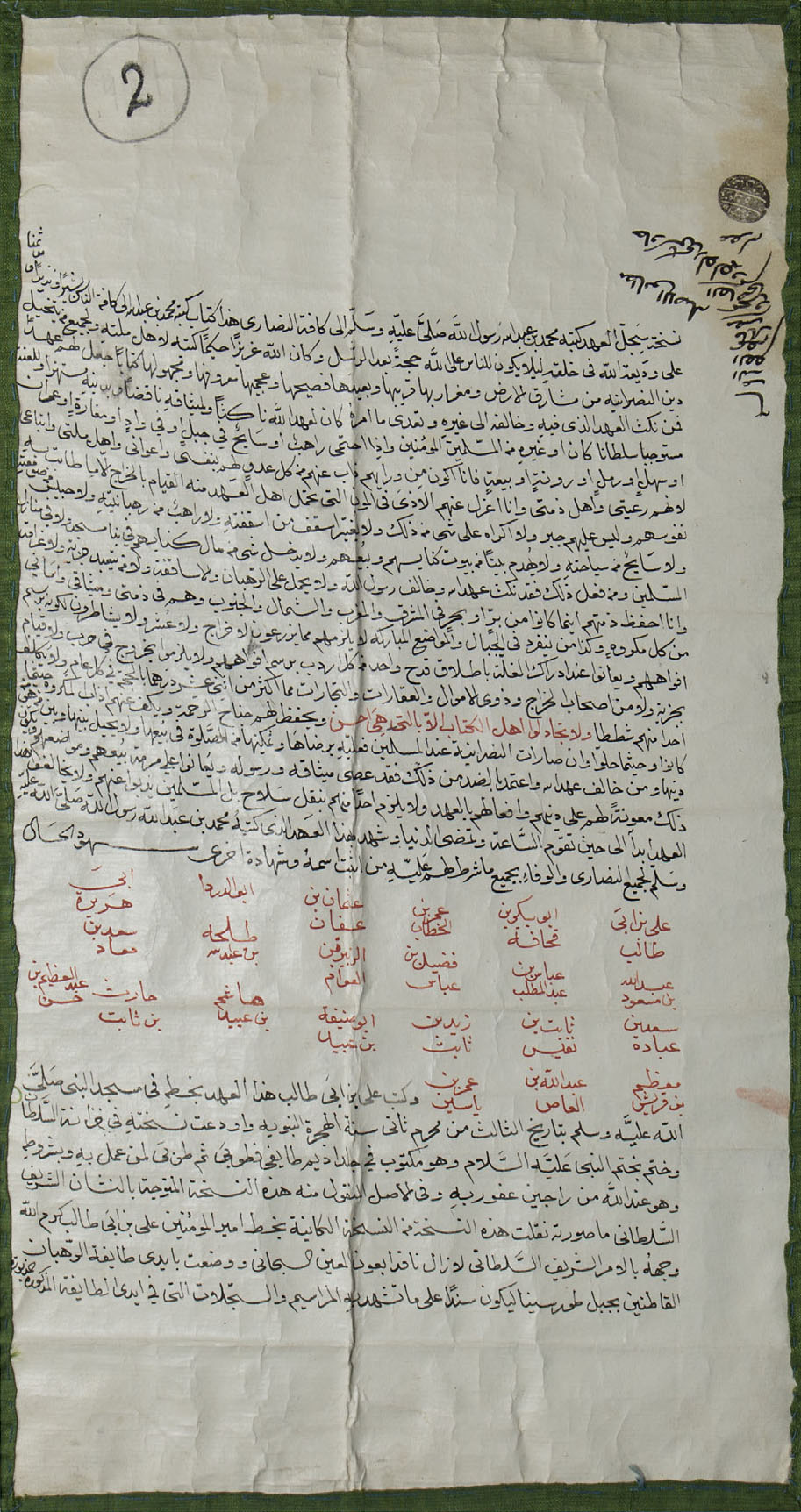MOHAMMED

According to the tradition preserved at Sinai, Mohammed both knew and visited the monastery and the Sinai fathers. The Qoran makes mention of the Sinai holy sites.
The Patent of Mohammed Granted to the Holy Monastery of Sinai
In the second year of the Hegira, corresponding to AD 623, a delegation from Sinai requested a letter of protection from Mohammed. This was granted, and authorized by him when he placed his hand upon the document. The Letter of Protection is known as the Ahtiname, from the Arabic words ahd, which means “obligation,” and name, which means “document, testament.” The document has been instrumental in the protection of the monastery, and as a means of ensuring peaceful and cooperative relations between Christians and Moslems. The continuous existence of the monastery during fourteen centuries of Islamic rule is a sign of the respect given to this Letter of Protection, and the principles of peace and cooperation that it enshrines.
In AD 1517, Sultan Selim I confirmed the monastery’s prerogatives, but took the original letter of protection for safekeeping to the royal treasury in Constantinople. At the same time, he gave the monastery certified copies of this document, each depicting the hand print of Mohammed in token of his having touched the original.




